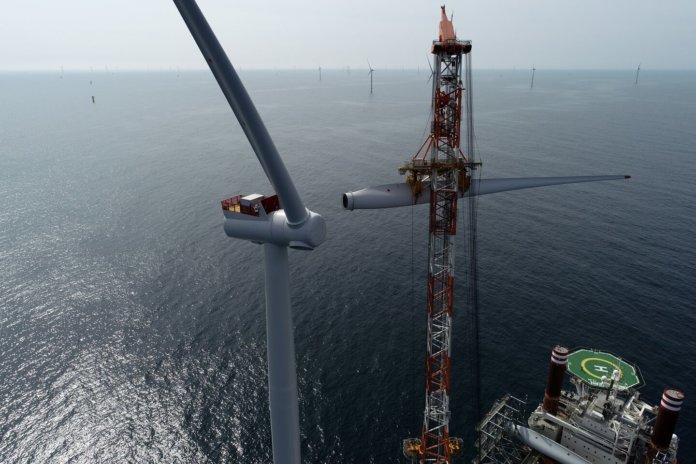Ørsted has announced the installation of the final turbine at its 1.2 GW Hornsea 1 project, which the company says is the world’s largest offshore wind farm.
Hornsea 1, which will cover an area of 407 square kilometers, is a 50/50 joint venture between Ørsted and Global Infrastructure Partners.
The component loadout took place at Siemens Gamesa Renewable Energy’s factory in Hull, England, where the majority of the blades were constructed.
The wind turbines were then transported out to sea by two specialist vessels: the Bold Tern, owned by Fred. Olsen Windcarrier, and DEME Group’s Sea Challenger. Both are installation vessels that jack up in the sea to provide a sturdy base for lifting. Four turbines were loaded onto the vessel each time.
Standing 190 meters above sea level, each 7 MW Siemens Gamesa turbine, with its three 75-meter-long blades, will be able to power a U.K. home for over a day with each single rotation, says Ørsted.
The project, covering more than 407 square kilometers in the North Sea and comprising 174 turbines, is located roughly 100 kilometers from the Yorkshire, England, coast.
Duncan Clark, Ørsted program director for Hornsea 1, says, “The milestone of this last turbine being installed only nine months after the first one was erected is just one small part of this record-breaking project. Hornsea 1 has truly paved the way for the next generation of offshore wind farms.
He continues, “At the time of taking on the project, its scale and the technical pioneering required seemed a Herculean challenge, but a truly extraordinary effort from all those involved have managed to make this impressive feat of engineering the new norm.
“We have benefitted from fantastic working relationships with contractors and suppliers, and that includes vessel providers who have maintained a constant stream of communication to ensure that turbine installation has been concluded on time and within budget.”
Offshore construction started in January 2018, when the first monopile foundation was installed by GeoSea’s installation vessel, Innovation. In total, more than 8,000 workers were deployed.
The offshore construction team based themselves on-site at sea, ensuring the project was safe and on schedule in dynamic weather conditions. Living on board the GMS Endeavour for two weeks at a time, they were able to stay close to the action, as well as enjoy a gym, catered food, laundry service and high-speed internet.
Now that the final turbine has been installed, the project will undergo a period of commissioning and will be officially inaugurated in 2020 as the world’s largest offshore wind farm.




